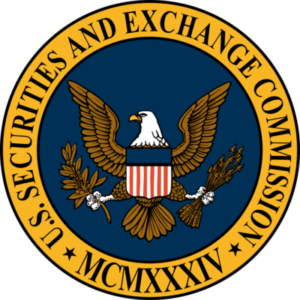Sometimes investors can’t help but get the feeling that stockbrokers themselves don’t understand the complex products they’re selling. The Financial Industry Regulatory Authority (FINRA) shares this concern, as evidenced by a regulatory notice it issued this month calling for heightened supervision of stockbroker activity involving complex products.
Complex Products
 Complex products are described by FINRA as featuring security or investment strategies with complicated, novel or derivative-like features. Examples include structured notes, reverse convertibles, inverse or leveraged exchange-traded funds, hedge funds and securitized products such as asset-backed securities.
Complex products are described by FINRA as featuring security or investment strategies with complicated, novel or derivative-like features. Examples include structured notes, reverse convertibles, inverse or leveraged exchange-traded funds, hedge funds and securitized products such as asset-backed securities.
The notice was meant to provide guidance to broker-dealer firms who have a duty under the law to supervise the brokers they employ. Supervision is especially important considering that the labyrinthine features of complex products make it harder for retail investors to protect themselves.
The intricacy of these products also makes it harder for investors to understand the risks and can impair the ability of brokers to understand how the product will perform under a variety of market conditions. The result can be inappropriate recommendations and sales.
A product with many moving parts may come with risks that run beyond fundamental market forces, even when the product was designed to decrease risk. As we have seen from the mortgage-backed securities debacle, unseen or misunderstood risk can swoop in like a black swan, and lay waste to the best of intentions, not to mention investors’ accounts.
FINRA Guidance on Complex Products
Recognizing that rapid innovation may make categories obsolete shortly after they are formed, FINRA refrained from defining complex products in its regulatory notice.
 Instead, FINRA discussed examples, and said it would leave the determination to the broker-dealers. The notice stated that even some simple products may carry the kind of substantial risks that calls for heightened scrutiny and supervision.
Instead, FINRA discussed examples, and said it would leave the determination to the broker-dealers. The notice stated that even some simple products may carry the kind of substantial risks that calls for heightened scrutiny and supervision.
FINRA offered up some information to help broker-dealers and investors know where to proceed with caution. It termed as complex any product with multiple features so that its return could vary widely under different scenarios.
Moreover, a product should be considered complex if it would be unreasonable to expect an average individual investor to understand the features of the product and the way in which the features could possibly interact to affect the return.
Complex products listed by FINRA include asset backed securities. These are products secured by a pool of collateral that can include mortgages, credit card payment or royalty payments. The creditworthiness of the underlying borrowers presents a risk, as does prepayment.
The FINRA notice also listed embedded derivative products. These may condition the repayment of principal and the payment of yield on the performance of an underlying asset. Information about this asset may not be readily available to investors.
For example, steepener notes state different returns over their lifetime. Usually these offer a high coupon rate for the first year as a teaser. After that, the rates are variable based on the steepness of a yield curve. Some firms offer notes with returns that depend on whether one or more underlying assets performs within a certain range.
Reverse convertible notes are another kind of embedded derivative product. They typically pay a higher coupon rate than traditional bonds, but investors can lose the entire amount of their principal if the price of the underlying asset falls below a certain point, called the knock-in price. Nor do investors receive any return on the assets’ appreciation, having traded that off for the higher coupon rate.
Many products are subject to gain or loss contingencies. The performance of these products can be impossible to predict. They may depend on the simultaneous occurrence of particular conditions across a number of asset classes. For example, the return of principal on range accrual notes can depend upon the value of two or more underlying assets on pre-defined dates.
Some structured notes provide payoffs tied to the worst performing reference index in a pre-selected group, called a “worst of” feature. The return of the principal at maturity of these notes might be reduced if the reference index falls by more than a pre-determined percentage.
Exchange traded products may not be well understood by many investors. Some of these products expose retail investors to stock market volatility and may provide inverse or leveraged exposure.
 For example, these products could be futures traded on the Volatility Index of the Chicago Board Options Exchange that reflect the market’s predictions about volatility. Investors may not understand that the return on the product may not be based on volatility on a given day, but on expectations of future volatility.
For example, these products could be futures traded on the Volatility Index of the Chicago Board Options Exchange that reflect the market’s predictions about volatility. Investors may not understand that the return on the product may not be based on volatility on a given day, but on expectations of future volatility.
Some products offer principal protection that can be withdrawn by the sponsor of the product based on certain events. This contingent protection may not be well understood by investors.
Leveraged or inverse exchange-traded funds (ETFs) are a good example of a product about which investors’ may not have realistic expectations. Many leveraged and inverse ETFs are reset every day. This means they are structured to achieve their stated leverage or inverse objectives on a daily basis and their performance over a longer period can be substantially different from what an investor might expect based on the daily leverage or inverse factor.
Investment products with complicated limits or formulas to determine gains also are fraught with potential problems. For example, the payout on some structured notes tracks the upside performance of an underlying asset, so an investor may believe, the better the performance the better the payout.
That’s not always the case, however. Some products come with a limit. If the underlying asset’s value passes a pre-determined threshold, the payoff is automatically cut to a much lower level, regardless of how it performs afterwards. Obviously, products like these are easily misunderstood
FINRA was careful to note that the list of products in its regulatory notice was not exhaustive, and many products with characteristics not mentioned in the notice may nonetheless need to be handled with heightened compliance and supervisory procedures because of the risk.
The main point firms and investors need to take away, the notice said, is that if a product includes embedded derivative-like features or asset price or index contingencies, then firms should enhanced their oversight of these products.
FINRA Recommendations Concerning Heightened Supervision
The sale of complex products need to be approved and vetted for suitability per FINRA rules. A firm or broker needs to perform reasonable due diligence, and they must understand the nature of the transaction, the strategy behind it, and the potential risks and rewards.
 The requirements for due diligence to be reasonable will vary depending on the complexity of the product, its associated risks, and how familiar the firm or the broker is with this particular kind of investment.
The requirements for due diligence to be reasonable will vary depending on the complexity of the product, its associated risks, and how familiar the firm or the broker is with this particular kind of investment.
The potential performance of the product should be analyzed under a wide range of market scenarios. Any lack of understanding caused by the failure to make such an analysis could violate the suitability rule, FINRA’s notice said.
Firms need to have formal written procedures to make sure that brokers do not recommend complex products without a thorough vetting.
FINRA’s Suggested List of Questions To Be Asked During Vetting
- Is the product so complex that it is not transparent?
- Is the product too complex to be suitable?
- Is the product meant for limited or general distribution and how will it be controlled?
- Does the product have a reasonable investment objective given its characteristics?
- Can less complex products achieve the investment objectives?
- Who should avoid this product?
- How does the product improve the firm’s current offerings?
- Are the assumptions that underlie the product sound?
- How will the product’s performance be affected by various market or economic scenarios?
- What scenarios could wipe out the gains the investor may come to expect, such as principal protection or enhanced yield?
- What are the risks for investors, and if the product trades high yield for high risk, does the potential yield justify the risks to principal?
- Does the product present any unusual tax, credit or legal risks?
- Is the broker trained to handle this product? In other words, does the broker understand it?
- How liquid is the investment? Does a secondary market exist for the product?
Responsibilities Continue After Sale
A procedure to approve the sale of complex products will help ensure suitability, but the FINRA notice also said firms need to develop procedures to find out how the products performed after the sale.
 Some firms require complex products to be formally tracked for a certain period so the firm can assess performance and detect whether market conditions have increased the risks.
Some firms require complex products to be formally tracked for a certain period so the firm can assess performance and detect whether market conditions have increased the risks.
Firms also need to make sure that only those qualified to recommend complex products are doing so, and only to appropriate individuals.
Brokers who recommend these products need to be educated. For example, brokers who recommend collateralized mortgage obligations need to understand the credit, liquidity and prepayment risks associated with the collateral.
Those who recommend products with embedded derivatives must thoroughly understand the payoff structure, the limits on upside potential and the risks to investors inherent in the payoff structure.
Moreover, brokers should be schooled in the characteristics of the underlying asset, including its historic performance and volatility. There may be multiple assets underlying a given investment product, and the brokers need to understand the interrelationships.
The FINRA notice stated that brokers should know how likely it is for the complex product to be called by the issuer, and the limits of any principal protection.
Individual Customer Suitability
Broker need to ask themselves whether a security is appropriate for the particular customer or they risk violating FINRA’s suitability rule, the notice said.
The rule states that firms and brokers must consider a customer’s tolerance for risk and investment experience, among other things.
FINRA recommended in the notice that firms adopt the approach mandated for options trading accounts when they are dealing in complex products. This approach requires brokers to have a reasonable basis for believing that the customer is knowledgeable and experienced enough as an investor to thoroughly understand the risks of the recommended transaction. The customer must also be able to financially bear the risks.
Limitations on the concentration level of a certain type of investment in an account, or limitations on the type of investors to whom complex products may be sold are other possible techniques, the FINRA notice said.
 Firms may also pre-qualify investors with agreements that use straightforward language to explain the features of the products and the risks that they entail. Though these agreements usually require customers to attest that they have been informed of the possible consequences of complex products, the agreements do not reduce a firm’s responsibility – nor a broker’s – to conduct a customer-specific suitability analysis.
Firms may also pre-qualify investors with agreements that use straightforward language to explain the features of the products and the risks that they entail. Though these agreements usually require customers to attest that they have been informed of the possible consequences of complex products, the agreements do not reduce a firm’s responsibility – nor a broker’s – to conduct a customer-specific suitability analysis.
Brokers and firms should not rely inappropriately on features of complex products meant to reduce risk, such as principal protection. Such protection does not necessarily make the product the kind of conservative investment required by an elderly investor for whom safety is of primary importance.
Customers must be informed about all the facets of the product, such as how it is likely perform under various market conditions, the risks and possible benefits, and the cost. Brokers need to be clear about scenarios in which the product may perform poorly.
The broker also needs to assess whether, after such a discussion, the customer understands the payout structure, and the underlying asset, index or collateral.
Firms and brokers should consider whether less complex or costly products could achieve the same objectives for their customers. For example, brokers should compare a structured product with embedded options to multiple financial instruments on the open market. The structure product could be riskier, even taking the advantages of purchasing a single product into account.
The FINRA notice also emphasized that specially qualified supervisors should be watching over all of these transactions
FINRA Guidance
In past years, FINRA has reminded broker-dealer firms of their obligation regarding complex products on a product-by-product basis. For example, in 2003, FINRA addressed the sale of hedge funds and non-conventional instruments to retail investors.
Then in 2005, FINRA recommended best practices for the review of novel financial products. FINRA has also issued regulatory notices about structured products, leveraged and inverse exchange-traded funds, equity-indexed annuities, principal protected notes, reverse convertibles and commodity futures-linked securities.
Heightened supervision was a common theme. Some notices also asked firms to consider whether less complex products could achieve the same objectives for investors.
A notice issued in 2010 explained that broker-dealers are duty-bound to conduct reasonable investigations of their brokers’ representations about securities. When a registered broker recommends a security, the broker-dealer is vouching for that broker, essentially telling the customer that the security has been vetted and is suitable. The broker-dealer has a special relationship with the customer that creates this duty of care, and the failure to meet this duty may constitute a violation of the antifraud provisions of the federal securities laws as well as FINRA rules.
Securities and Exchange Commission Guidance
 The Securities and Exchange Commission (SEC) has also expressed concern about complex products. The FINRA notice states that the SEC has brought a number of enforcement cases in recent years addressing suitability violations, fraud in marketing materials for collateralized debt obligations and misrepresentations about a particular instrument’s exposure to the sub-prime real estate market.
The Securities and Exchange Commission (SEC) has also expressed concern about complex products. The FINRA notice states that the SEC has brought a number of enforcement cases in recent years addressing suitability violations, fraud in marketing materials for collateralized debt obligations and misrepresentations about a particular instrument’s exposure to the sub-prime real estate market.
In her 2010 keynote address to the annual seminar of the Compliance and Legal Society of the Securities Industry and Financial Markets Association, SEC Chairman Mary L. Schapiro considered how the system could be changed to prevent market catastrophes. She began with a reference to the credit crisis in 2008 that “shook our financial system to its core.”
Schapiro ran through a set of proposed rules concerning complex products meant to increase transparency and fairness. A search of SEC records showed that most of the rules are still pending.
The transparency so vital to the healthy functioning of financial markets, Schapiro said, was much easier when the products were relatively simple stocks and bonds. As products have become more complicated, individual investors have lost the ability to judge them. What’s worse, even the purported experts have proven unable to judge these products sometimes, leading to a cascade of losses.
One pending rule covers asset-backed securities (ABS), instruments created when loans or other assets are bundled together. Schapiro noted the many possible variations, such as dividing the ABS into multiple tranches with varying risk levels and different expected returns, rebundling securities into more complex collateralized debt obligations, or creating synthetic collateralized debt obligations.
For investor to make informed judgments on ABS, they must possess an accurate analysis of the risk attached to the assets on which they are based. Unfortunately, Schapiro said, in recent years investors have gone in blind, with no idea of the composition of each ABS. It was a high stakes game of “trust me.”
The proposed SEC rules would require ABS issuers to provide complete data for each loan in the asset bundle, both when they are securitized and over the life of the investment.
The data required would include the terms and underwriting of the loan, plus information on the collateral and the borrower’s credit. A database would make it easy for investors or their brokers to manage large amounts of data without having to rely on credit rating agencies, whose judgments can be seriously flawed.
The rule would also bring the interests of issuers and investors closer together by creating a retention requirement for certain ABS.
Schapiro also discussed sales of over-the counter derivatives in her speech.
She noted that these products were “not even a glimmer in the eyes” of the regulators who created the securities laws back in the 1930s.
Although the laws should apply to these products in principle, a loophole was created by the Commodity Futures Modernization Act of 2000, Schapiro said. As a result, over-the-counter derivatives are not transparent. Despite the fact that they could not be priced accurately, people traded in them anyway, and unknown risk spread through the system.
Therefore, Schapiro said, the SEC wants to impose the kind of transparency on the derivatives marketplace that exists in the corporate bond market. New rules are essential for investors to engage in derivatives transaction on an informed basis.
The SEC has also become concerned with fairness, as high-speed computerized trading makes it east to move markets in seconds, Schapiro said. Trading volume is so enormous, and spread across so many centers, that the array of services and products is almost impossible to grasp.
One proposed rule is a ban on flash orders. These allow a limited group to see the orders before they are publicly displayed. In other words, flash orders allow a chosen few to trade in those orders before the public has the opportunity, which is not exactly a fine example of fairness in the system.
Schapiro ended her speech by expressing confidence that regulators can keep up with the financial innovation. She recommended a return to the basic principles of transparency and fairness rather than a frantic bid to react to each inscrutable product that emerges on the markets.
Because FINRA derives its authority from the SEC, it is hardly surprising that complex products are a concern of both institutions.
FINRA’s recently issued regulatory notice concluded by emphasizing that brokers should recommend complex products to retail investors only after the firm has implemented heightened supervisory and compliance procedures.
Firms also need to follow with rigorous tracking of the effectiveness of these procedures, the notice said. The sale of these products should be monitored in a way reasonably designed to make sure that they are recommended only to suitable customers who understand all the features and contingencies.
Alternative Investments including alternative mutual funds are simply non-traditional mutual funds. Instead of investing in typically stocks and bonds, alternative mutual funds are funds that basically invest in hedge funds. These underlying hedge funds may employ unique trading or investment strategies or may invest in everything from traditional stocks and bonds to complex commodity futures and options, global real estate, leveraged loans, start-up companies or even unlisted securities. An alternative mutual fund will invest generally in a portfolio of these hedge funds, much like a regular or traditional mutual fund would invest in a portfolio of stocks, bonds, options, etc.
 Alternative mutual funds are registered with the Securities & Exchange Commission, and are offered publicly to investors. These funds may be sold as closed end funds. Unlike private hedge funds, alternative mutual funds are regulated under the Investment Company Act of 1940.
Alternative mutual funds are registered with the Securities & Exchange Commission, and are offered publicly to investors. These funds may be sold as closed end funds. Unlike private hedge funds, alternative mutual funds are regulated under the Investment Company Act of 1940.
Alternative mutual fund strategies are generally complex and may include hedging and leveraging through derivatives, arbitrage, short selling or other strategies. Some funds have a single strategy, others may have multiple strategies, and invest in a fund containing numerous other alternative funds, or “fund of funds.” Each fund, given its particular investment objective, will generally have different diversification requirements, investment limitations, limitations on the use of leverage, limitations on the investment in illiquid securities, over concentration, market pricing and redeemability.
Alternative Mutual Funds Yield a Higher Risk
Alternative mutual funds are significantly riskier than conventional mutual funds. Like all other mutual funds, alternative mutual funds also have a Net Asset Value or NAV. However, unlike traditional mutual funds, because the assets of an alternative mutual fund consists of its interest in the underlying hedge fund assets, which may own non-marketable, illiquid or otherwise non-traditional securities, the actual value of these funds may not be exceedingly transparent. Moreover, in a variety of circumstances, these interests in the underlying hedge funds, may not be readily redeemable.
Stockbrokers and broker-dealers offer these securities to retail customers as a way to invest in hedge funds, or hedge fund like strategies. Within the last seven years the combined “assets under management” of alternative mutual funds has increased from $50 billion in 2008 to approximately $300 billion as of December 2014. There are now more than 200 securities broker dealers that offer these funds to retail customers.
Complexity Causes Concern
Because these funds are exceedingly complex, the Financial Industry Regulatory Authority or FINRA is concerned that registered representatives or stockbrokers often may not understand how the funds will respond to various market conditions or what strategies a fund’s advisor may effect in changing or varying market conditions. Although all broker dealers are required to conduct some from of due diligence with respect to the sale of these funds, FINRA has found that many of these offerings lack meaningful due diligence when offered by already established or approved mutual fund sponsors. FINRA also lists alternative mutual funds as one of its 2015 “Regulatory and Examination Priorities.”
 In February 2017, The SEC’s Office of Investor Education and Advocacy issued an Investor Bulletin concerning the potential risks associated with alternative mutual funds. SEC Issues Investor Bulletin Warning Investors About Alternative Mutual Funds.
In February 2017, The SEC’s Office of Investor Education and Advocacy issued an Investor Bulletin concerning the potential risks associated with alternative mutual funds. SEC Issues Investor Bulletin Warning Investors About Alternative Mutual Funds.
Guiliano Law Group
Our practice is limited to the representation of investors. We accept representation on a contingent fee basis, meaning there is no cost to you unless we make a recovery for you. There is never any charge for a consultation or an evaluation of your claim. For more information, contact us at (877) SEC-ATTY.
For more information concerning common claims against stockbrokers and investment professionals, please visit us at securitiesarbitrations.com
To learn more about FINRA Securities Arbitration, and the legal process, please visit us at securitiesarbitrations.com.
